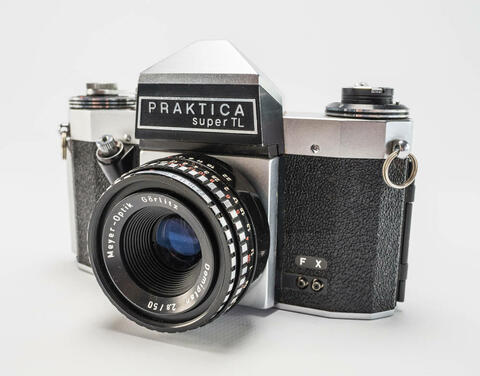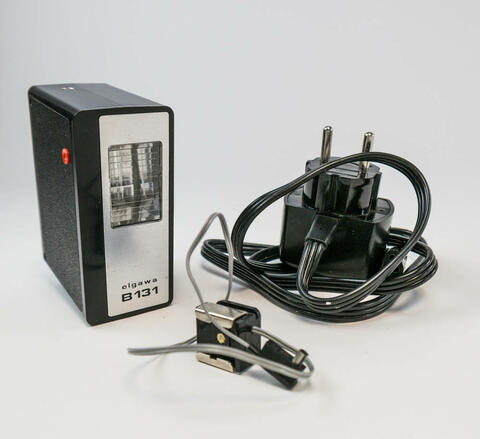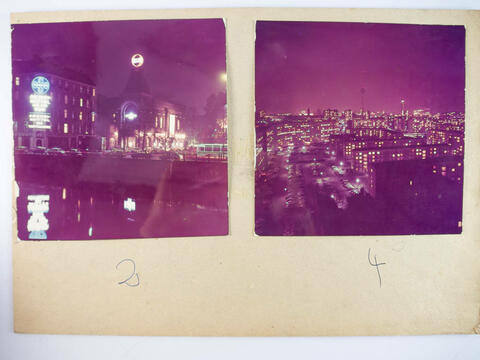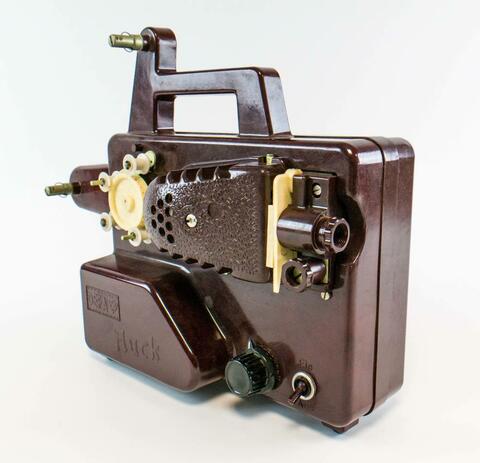Günter Höhne writes
DDR Design PRAKTI Camera
60 years ago, engineers and technicians of the traditional VEB Kamera- und Kinowerke Dresden (Camera and Cinema Factory Dresden), later operating under the name of “Pentacon”, created an invention that caused quite a sensation. The PRAKTI camera was born and with that the world’s first completely automatic camera with an integrated motor-driven film transport – Something to celebrate since that invention opened a new chapter in the history of photo technology.
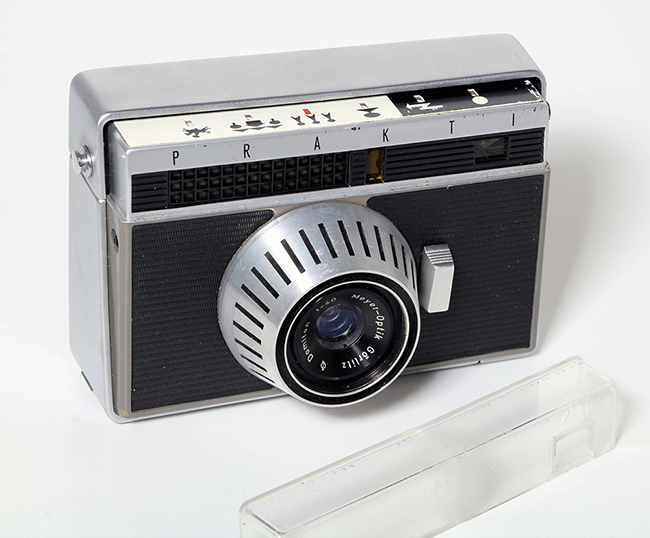
The handling of that rather heavy metallic wonder-machine (almost 700 grams at a price of 460,- DDR Marks) was simple and happened via an easily managable lense-swivel that was located right next to the trigger. Nothing more was necessary to take great shots. A register at the top side of the camera highlighted all the chosen motive programmes with the help of red icons. Shutter speed, lense and distance were automatically assigned. The ideal aperture was automatically chosen at the moment of triggering.
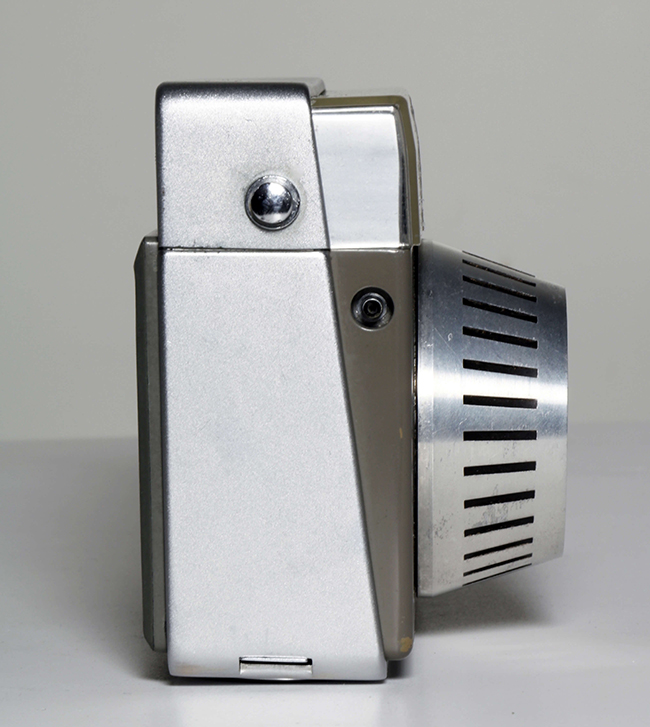
But: The start with new inventions isn’t always smooth and easy – especially when they are ahead of their time. Many of the elements of the PRAKTI camera were trendsetting and forward-looking. The complex serial manufacture wasn’t sufficiently proved and the failure ratio of single automatisms was way too high, though. That's why the production had to be stopped after only a few years.
Conclusion: DDR Design PRAKTI camera
Felicitous photos, a shapely, well-designed and fully automated working camera – that was the promise of the PRAKTI produced in Dresden in 1960. The PRAKTI camera was ahead of its time, though. Nevertheless: new standards for cameras were set and the PRAKTI led the way to a new era.
About Günter Höhne:
Günter Höhne is the author of several books about DDR design such as “Arbeit, Freizeit, Ferien” (work, free time, holidays), “Wohnungen für alle: Vom Leben im Plattenbau” (Apartments for everyone: About life in prefabricated concrete buildings) und “Das große Lexikon: DDR-Design” (The Big encyclopedia: DDR Design). His books were published by Komet Verlag and can partly be purchased in our museum shop.
You can find more articles about exciting design objects from the DDR under the category “DDR Design” in our blog.
